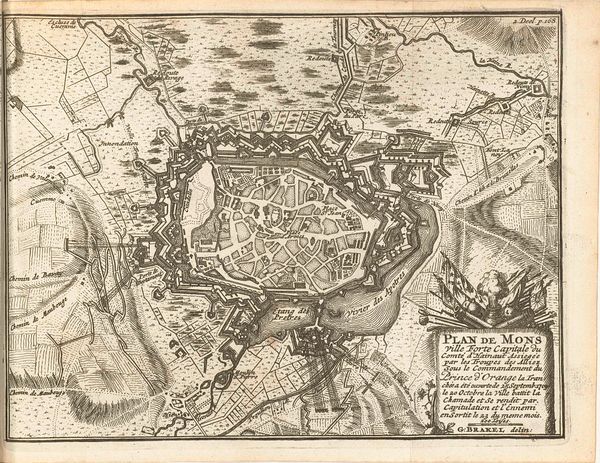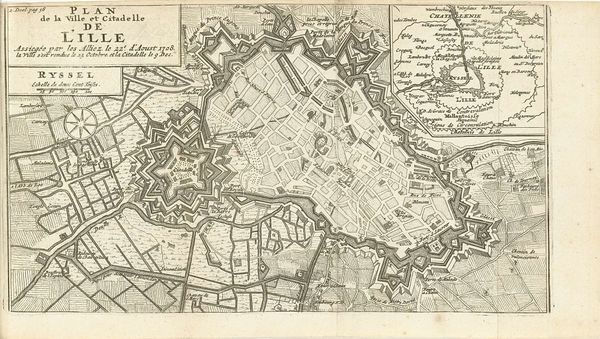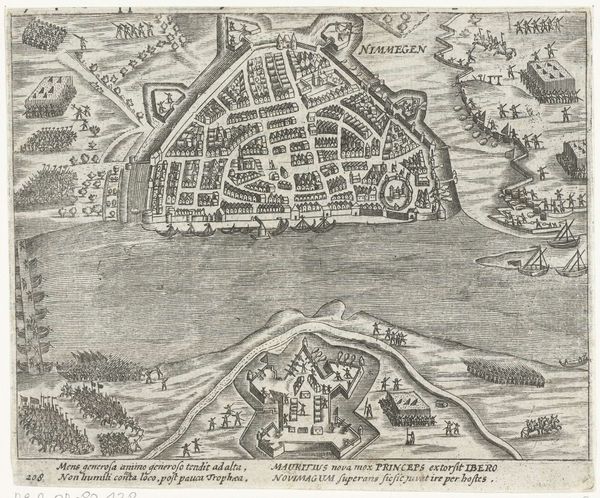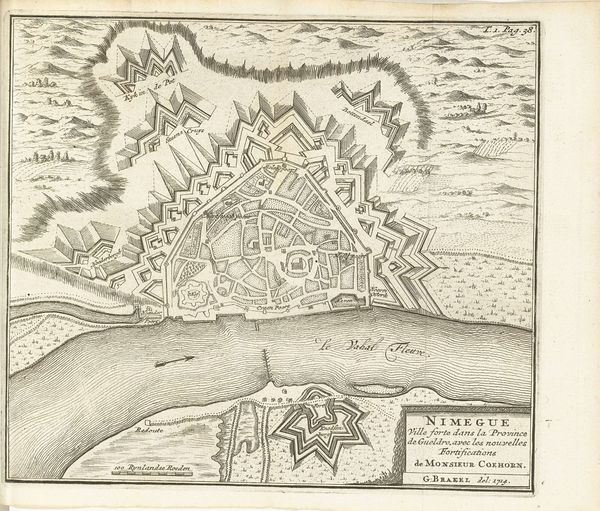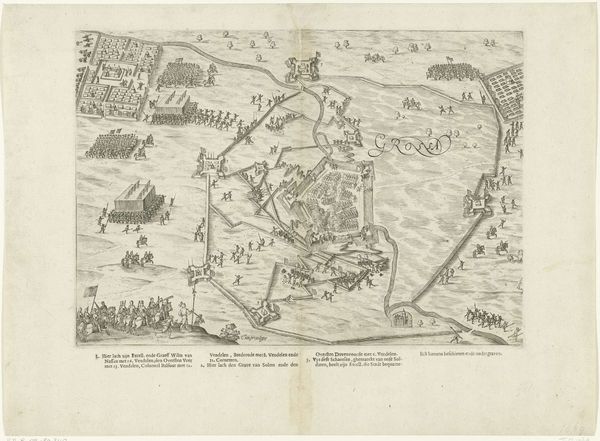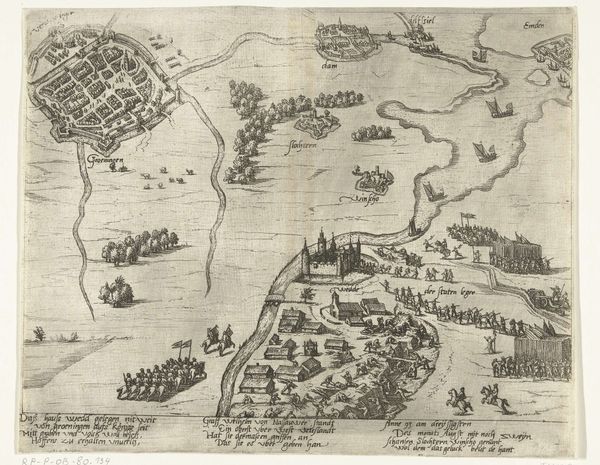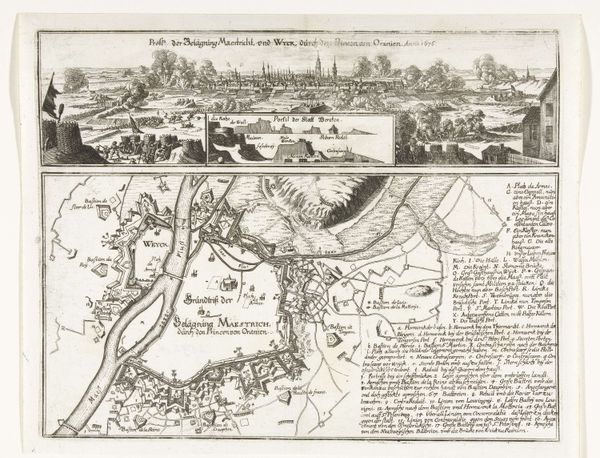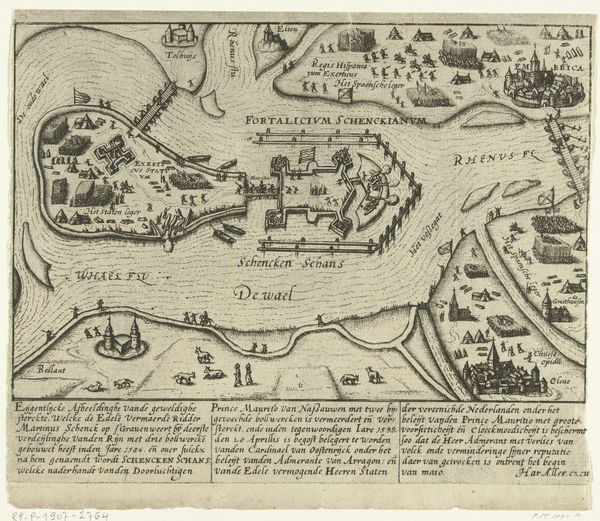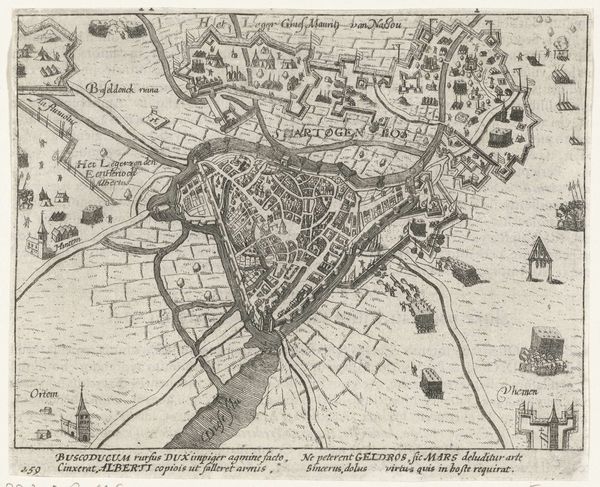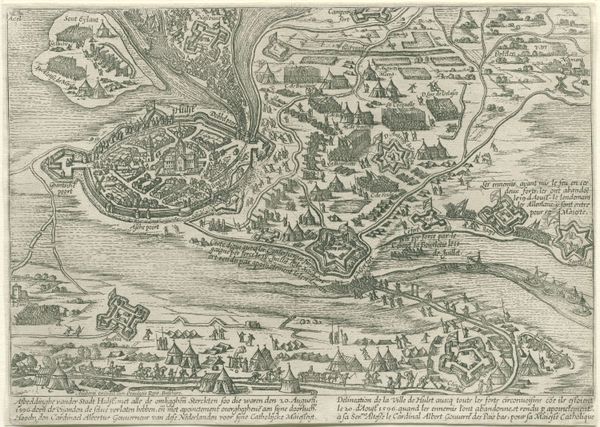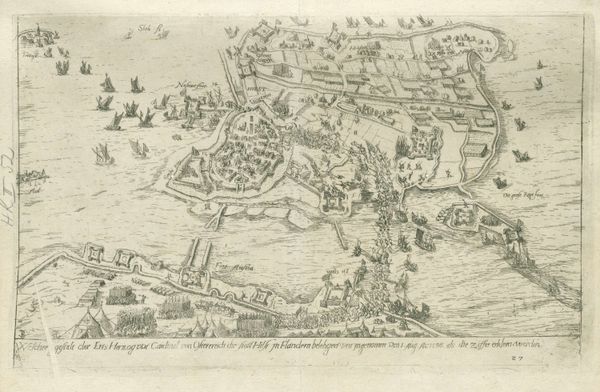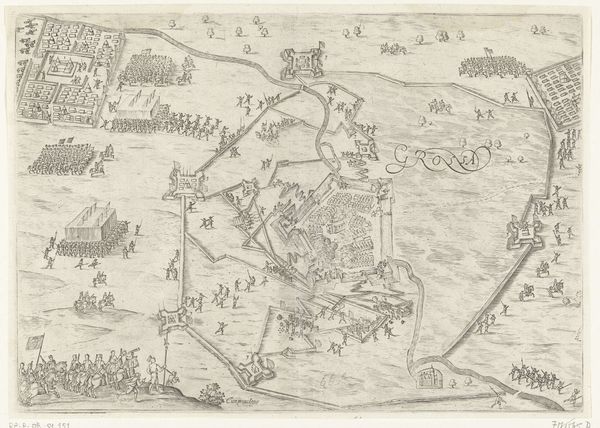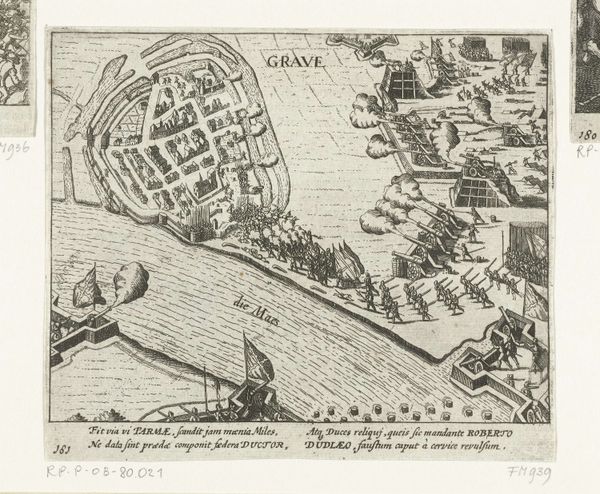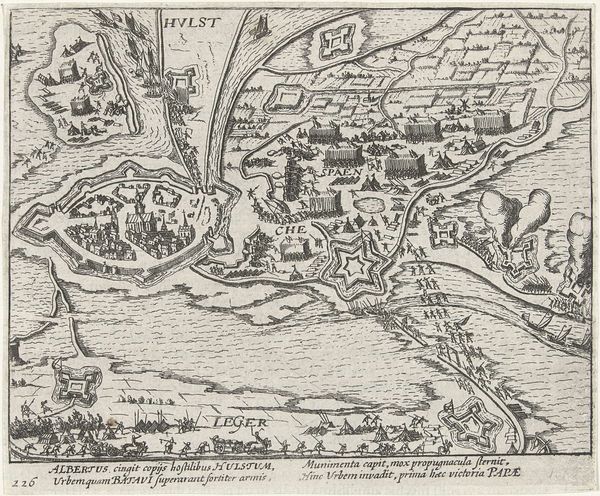
print, ink, engraving
#
baroque
#
pen drawing
# print
#
landscape
#
ink
#
line
#
history-painting
#
engraving
Dimensions: height 150 mm, width 190 mm
Copyright: Rijks Museum: Open Domain
Curator: Looking at this piece, I'm struck by the sheer density of information conveyed through such delicate lines. It is “Slag bij Oudenaarden, 1708,” or “The Battle of Oudenaarde, 1708” by Matthijs Pool, dating from 1714 to 1716. Created using ink and engraving techniques, this print provides an overview of a pivotal historical moment. Editor: My first impression is that this is an incredibly detailed schematic rather than a typical depiction of war. It almost feels like a blueprint, prioritizing precision and organization over dramatic effect. I wonder about the labor that went into creating something so intricate. Curator: Indeed. Its function served a clear purpose in memorializing a moment of victory for the allied forces. The Baroque style, visible in the detailed landscape elements, blends seamlessly with its function as a historical document. The means of producing this—etching, printing—allowed for the wider distribution of this interpretation of the battle, furthering its impact. Editor: I see that now, but how was this image meant to be received by the public? The sheer volume of details makes it challenging to grasp. Was it a form of political propaganda, reinforcing a certain narrative about the war? Curator: It likely served multiple purposes. Disseminating political messaging would certainly have been one, but also informing military leaders and celebrating Dutch power at a time of war. Beyond the political factors, one must acknowledge the craftsmanship required, which elevates the work beyond mere functional diagram. Note the linear work, combined with hatching and cross-hatching to achieve tone, mimicking that of pen and ink drawings. The choice of using prints suggests an intention of reproducibility and distribution, reflecting changes in how historical events were archived. Editor: It really brings up a discussion of value too. Is this high art, or cartography, or even military technology? How was this commissioned and what was Pool’s background and training to lead to such a detailed visual result? Was it just a commodity that he could sell at the print market? Curator: These are questions for historians, truly. It encapsulates the tensions between function, artistry, and social communication inherent in art production. We have to continue to delve deeper into this, since our understanding changes, always. Editor: And so it reflects that a battle is still going on: trying to fully see the moment and its traces.
Comments
No comments
Be the first to comment and join the conversation on the ultimate creative platform.
